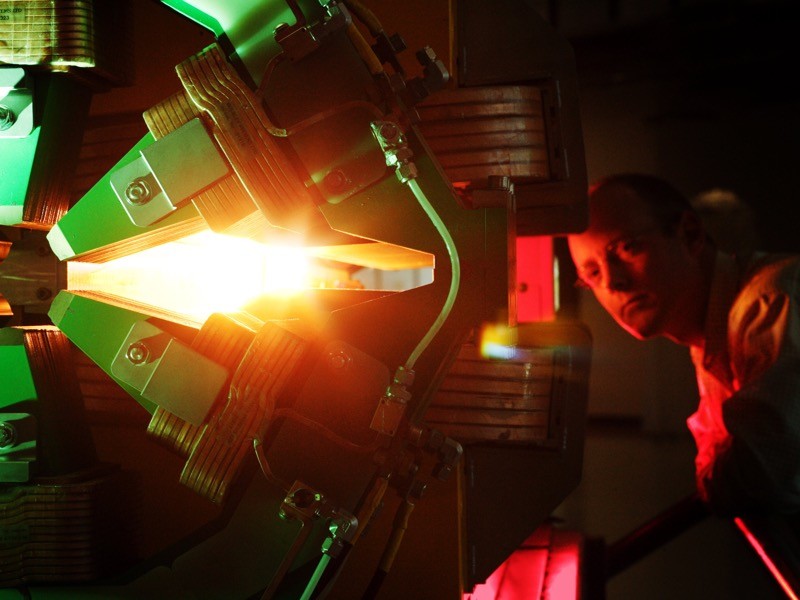After graduating with a master’s degree in human embryology from the University of Aberdeen, UK, I was anticipating several years of wet-lab work, stem-cell cultures and primer optimization while studying placental ageing and stillbirth as part of a PhD at the Hunter Medical Research Institute in Newcastle, Australia.
Instead, I was surprised when, last February, a month into my PhD, my supervisors Roger Smith and Kaushik Maiti invited me to help conduct an experiment at the Australian Synchrotron in Melbourne, alongside two physicists.
Synchrotrons are particle accelerators that use a beam of electrons travelling at high speed to inspect a sample at very high resolution — far removed from the ‘normal’ world of embryology. But our team was using that beam to find metallic elements in placentas from healthy and complicated pregnancies, to understand how those metals might affect placental health.
Light-years away from my research experience and comfort zone, this was the perfect opportunity to learn some basic truths about scientific investigation.
Research, but be prepared to be unprepared
I spent the week before the trip frantically reading papers, doing the facility’s online safety induction and organizing plane tickets. By the time I was standing in the synchrotron office, I was excited, curious and apprehensive. Our jobs on the first day, however, were mainly staying out of the physicists’ way while they incrementally adjusted machinery and answering their questions about preparing samples. After a quick run through of the software, we were left to watch over the beamline and modify the analysis as needed; interspersing these tweaks with occasional late-night calls to the experts.
I learnt even more about the synchrotron protocols, software and data-acquisition techniques while sitting, over-caffeinated, in front of six computer screens in the middle of the night, with machines churning behind a thick steel door just out of my sight. Studying the mechanisms and theory of a different science and, in turn, teaching our work to people who had a non-biological background was thrilling. It was like learning a new language, and it forced us to examine our research question with fresh eyes.
Trust in your experience — even if it’s unorthodox
While learning to operate the synchrotron, basic skills I had gained from previous work spent handling Excel sheets and medical forms, as a data-entry clerk at Aberdeen Maternity Hospital, came in useful. Much scientific work consists of accurately labelling and storing data in a logical way, quickly recalling strings of numbers and acronyms, and handling unfamiliar software. These were all skills I had developed outside university education as much as in it.
Record everything
By the end of my first day at the synchrotron, I had filled more than half a new notebook with instructions for software and theories for future experiments. I avoided trusting entirely in my memory and fooling myself into thinking I’d remember it all in two months’ time. Those protocols were worth the time invested to record them accurately — as proof of my evolving expertise and for future researchers who might require those notes to familiarize themselves with my project.
Acknowledge what you don’t know
Ultimately, this experience was valuable training on the need for interdisciplinary collaborations when developing research questions. Collaboration requires the ability to step back from a project and trust other scientists to do the work you cannot. It calls for clear communication of your questions and hypotheses, so colleagues from other disciplines can understand what you’re trying to achieve and produce an experiment that will answer your research questions.
Remain fascinated
Research any facility you visit and understand what it’s for and how it works — and not just within your own field. The synchrotron is a powerful, but underutilized tool in biomedical research. It is our responsibility as researchers to use all the resources available to us, and to form creative links between different disciplines.
This is an article from the Nature Careers Community, a place for Nature readers to share their professional experiences and advice. Guest posts are encouraged.
from WordPress https://ift.tt/3659m6m
via IFTTT



0 Comments